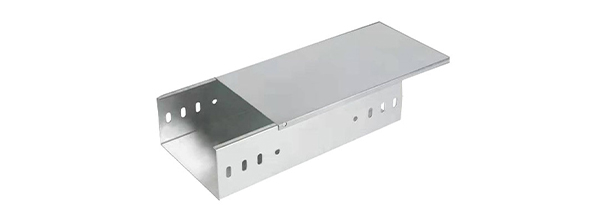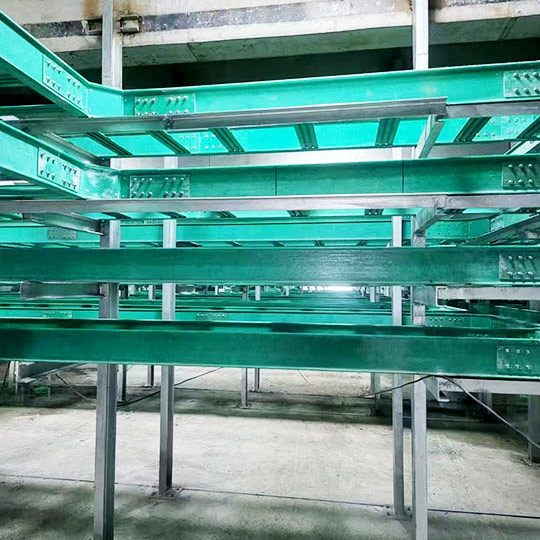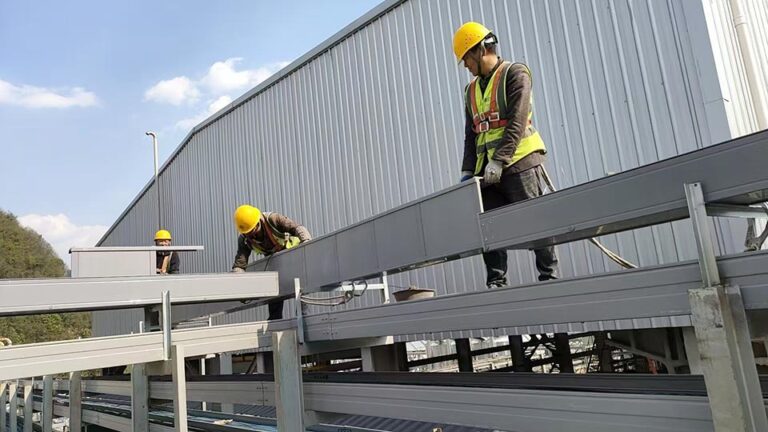Welcome to My Blog!
Before we dive into the content, I’d love for you to join me on my social media platforms, where I share more insights, engage with the community, and post updates. Here’s how you can connect with me:
Facebook: https://www.facebook.com/profile.php?id=61576230391049
Now, let’s get started on our journey together. I hope you find the content here insightful, engaging, and valuable.
Table of Contents
Introduction
Cable trays are an essential component in modern electrical and data wiring systems, providing structured support for cables in buildings, factories, and infrastructure projects. If you’re planning a project that involves large-scale wiring or want to understand the options beyond conduits, this guide is for you.
In this article, we’ll cover everything you need to know about cable trays — from their definition and types, to installation methods and common mistakes to avoid.
What is a Cable Tray?
A cable tray is a structural system used to support and organize electrical and data cables. It allows for safe, accessible, and flexible cable management, especially in commercial, industrial, and utility settings.
Cable trays serve three main purposes:
- Support: Prevent cable sagging and physical damage
- Organization: Neatly separate power, control, and data cables
- Safety & Compliance: Keep installations aligned with electrical codes
They are typically mounted on ceilings, walls, or raised floors.

Main Components of a Cable Tray System
A typical cable tray system includes:
| Component | Function |
|---|---|
| Tray Base | Supports the cables (ladder, perforated, wire mesh, etc.) |
| Fittings | Turns, elbows, tees, reducers for directional changes |
| Support Systems | Hangers, brackets, wall mounts |
| Covers | Optional protection against dust and water |
🔗 View detailed comparison → Types of Cable Trays Explained →
Why Use Cable Trays Instead of Conduits?
Cable trays vs. conduits is a common debate in electrical planning. Here’s a quick comparison:
| Feature | Cable Tray | Conduit |
|---|---|---|
| Installation Speed | Faster | Slower (individual wiring) |
| Maintenance | Easy (open access) | Difficult (sealed) |
| Cable Expansion | Easy to add/replace | Requires rewiring |
| Cost | Lower long-term | Higher labor & material |
🔗 View detailed comparison → Cable Tray vs Conduit: Which is Better? →
Types of Cable Trays
There are several cable tray types designed for different cable loads, environments, and installation styles:
Ladder Type Cable Tray
- Open-rung structure
- Ideal for power cables
- Promotes airflow and heat dissipation
- Cost-effective and strong
Solid Bottom Cable Tray
- No ventilation holes
- Ideal for sensitive communication cables
- Provides maximum protection
- Not recommended where heat dissipation is critical
Trough Cable Tray
- Perforated base
- Balance between airflow and protection
- Common in light industrial settings
Wire Mesh / Basket Cable Tray
- Lightweight & flexible
- Great for data centers and light-duty installations
- Can be bent or cut on-site
Channel Cable Tray
- Narrow and shallow
- Ideal for single cable runs
- Easy to install in tight spaces
🔗 View detailed comparison → Types of Cable Trays Explained →
Cable Tray Materials and Finishes
Cable trays must match environmental and mechanical needs. Common materials include:
Metal Materials:
- Steel (Galvanized or Stainless) – High strength, corrosion resistance
- Aluminum – Lightweight and corrosion-resistant, but lower load-bearing
Non-Metallic:
- Fiberglass Reinforced Plastic (FRP) – Chemical resistant, suitable for corrosive environments (e.g., wastewater plants)
Finishes:
- Hot-Dip Galvanized – Outdoor corrosion resistance
- Powder Coating – Custom colors and extra protection
- Mill Finish – For indoor, clean environments
How to Install Cable Trays (Step-by-Step)
Installing cable trays correctly ensures safety and performance. Here’s a simplified guide:
Step 1: Planning
- Evaluate cable types and loads
- Choose tray type, material, and routing path
- Calculate support spacing and tray width
Step 2: Mounting the Tray
- Use ceiling rods, wall brackets, or trapeze hangers
- Ensure correct clearance from other systems
- Anchor securely according to tray weight
Step 3: Cable Installation
- Lay cables evenly
- Group similar voltage and signal types
- Use cable ties or cleats to prevent movement
Step 4: Grounding and Bonding
- Metallic trays require proper grounding
- Follow NEC or IEC grounding requirements
Step 5: Inspection and Labeling
- Check tray alignment and stability
- Label tray runs for identification and maintenance
Pro Tip: Use expansion joints for long cable runs to prevent warping.
🔗 Detailed installation steps→Cable Tray Installation Guide→
Cable Tray Standards and Codes
To ensure safety and legal compliance, cable tray installations must follow national or regional codes:
| Standard | Region | Description |
|---|---|---|
| NEC Article 392 | USA | National Electrical Code guidelines for cable trays |
| NEMA VE 1 & VE 2 | USA | Construction and installation standards |
| IEC 61537 | Global | Specifies performance and testing of cable trays |
| CSA C22.2 | Canada | Canadian electrical standards |
Always consult a licensed electrical engineer before installation.
Common Mistakes to Avoid
Overloading – Exceeding tray capacity can lead to collapse or fire risk
Unsupported Spans – Gaps beyond support limits cause sagging
Improper Grounding – Leads to safety hazards and non-compliance
Wrong Tray Type – Using open trays in corrosive or outdoor environments
Mixing Voltage Levels – Can cause interference or safety hazards
Conclusion
Cable trays are a smart, scalable, and cost-effective solution for managing complex wiring systems. Whether you’re outfitting a data center, factory, or commercial building, choosing the right cable tray system can dramatically simplify maintenance, improve safety, and reduce long-term costs.
FAQ
Can cable trays be used outdoors?
Yes, provided the tray is rated for outdoor use and properly weatherproofed (e.g., galvanized steel or fiberglass-reinforced plastic, or FRP).
Do cable trays need to be grounded?
Yes, all metallic trays must be bonded and grounded according to NEC or local codes.
What’s the maximum load a tray can support?
Depends on tray type, material, and span. Refer to manufacturer specifications or use load calculators.
Can I mix power and data cables in one tray?
It’s best to separate them to avoid electromagnetic interference.
Ready to Get Started?
Need help selecting the right cable tray?
Contact Yidian Cable Tray today and get expert support, fast quotes, and premium products.
📥 Contact Us | 📄 Installation Cases | 🔗 Contact Us | 🛒 View Products →



